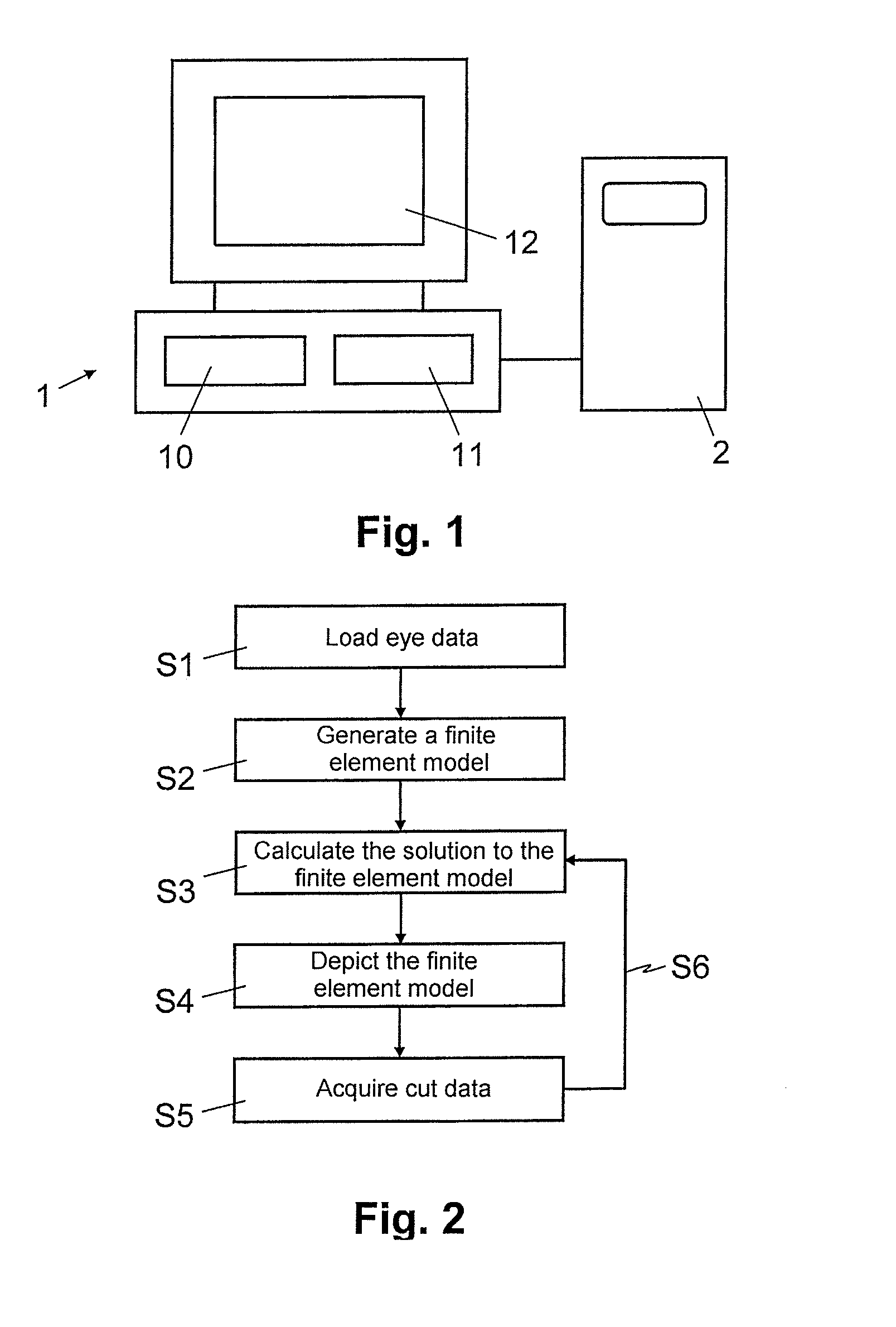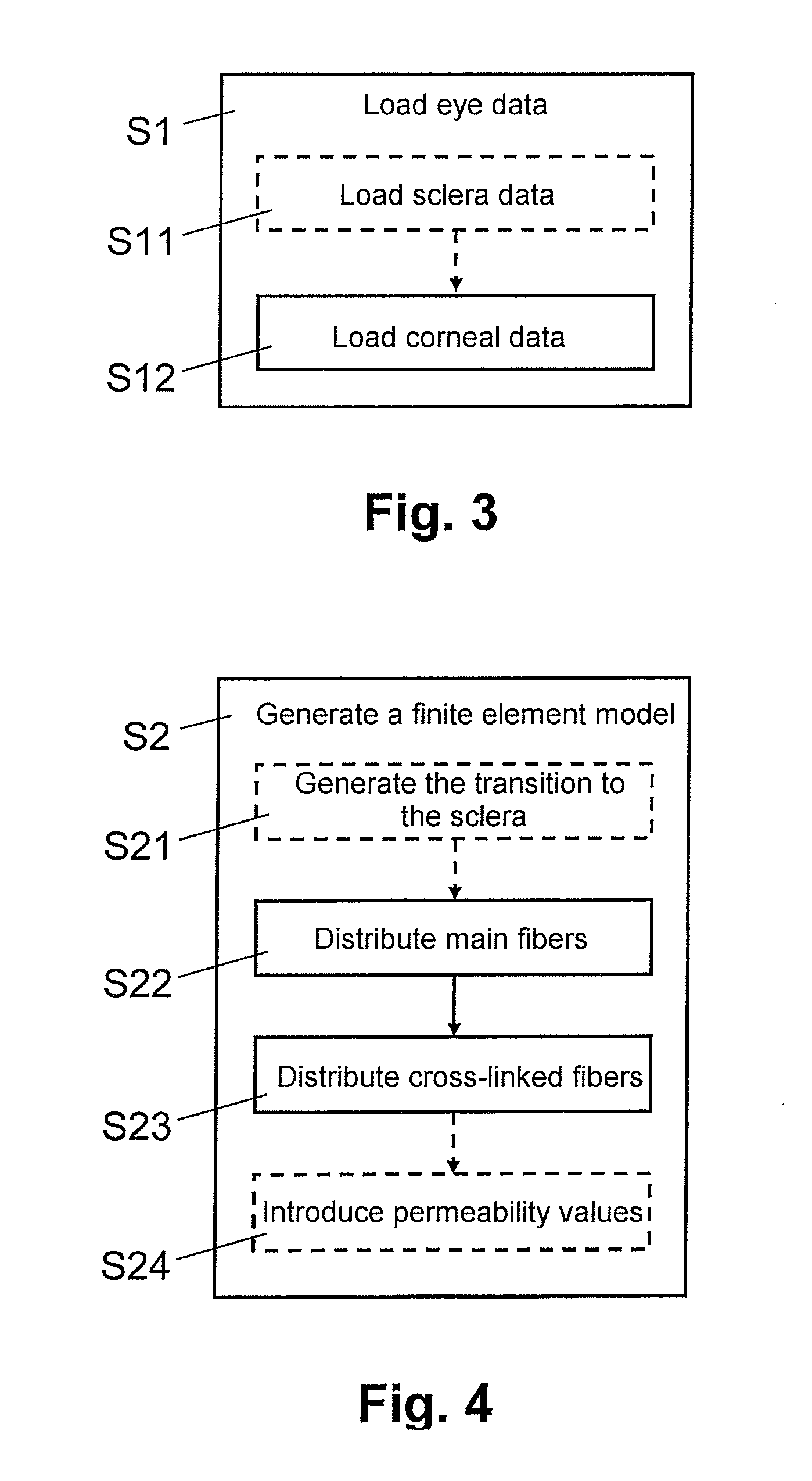Device and method for modelling a cornea
a technology of a device and a model is applied in the field of devices and a model of a cornea, which can solve the problems of difficult prediction of cut results, no known solution, and difficult planning of cuts
- Summary
- Abstract
- Description
- Claims
- Application Information
AI Technical Summary
Benefits of technology
Problems solved by technology
Method used
Image
Examples
Embodiment Construction
[0049]In FIG. 1, reference sign 1 relates to a computerized device for modeling a cornea for simulating tissue cuts in the cornea. The device 1 comprises an operational computer with at least one processor 10 and storage 11, connected to the processor 10, for storing data (data storage) and computer program code (program storage). In the embodiment in accordance with FIG. 1, the device 1 moreover comprises a display 12, e.g. an LED or LCD monitor. As depicted schematically in FIG. 1, the device 1 is connected in a variant to a computerized data source 2 external to the device 1, for example by way of a wired or wireless communication interface. The data source 2 comprises one or more processors and it is configured to transmit eye data, including patient-specific corneal data and / or population-based sclera data, to the device 1, as will be described in more detail below. Depending on the embodiment variant, the data source 2 comprises an ophthalmological measuring device for acquiri...
PUM
 Login to View More
Login to View More Abstract
Description
Claims
Application Information
 Login to View More
Login to View More - R&D
- Intellectual Property
- Life Sciences
- Materials
- Tech Scout
- Unparalleled Data Quality
- Higher Quality Content
- 60% Fewer Hallucinations
Browse by: Latest US Patents, China's latest patents, Technical Efficacy Thesaurus, Application Domain, Technology Topic, Popular Technical Reports.
© 2025 PatSnap. All rights reserved.Legal|Privacy policy|Modern Slavery Act Transparency Statement|Sitemap|About US| Contact US: help@patsnap.com



